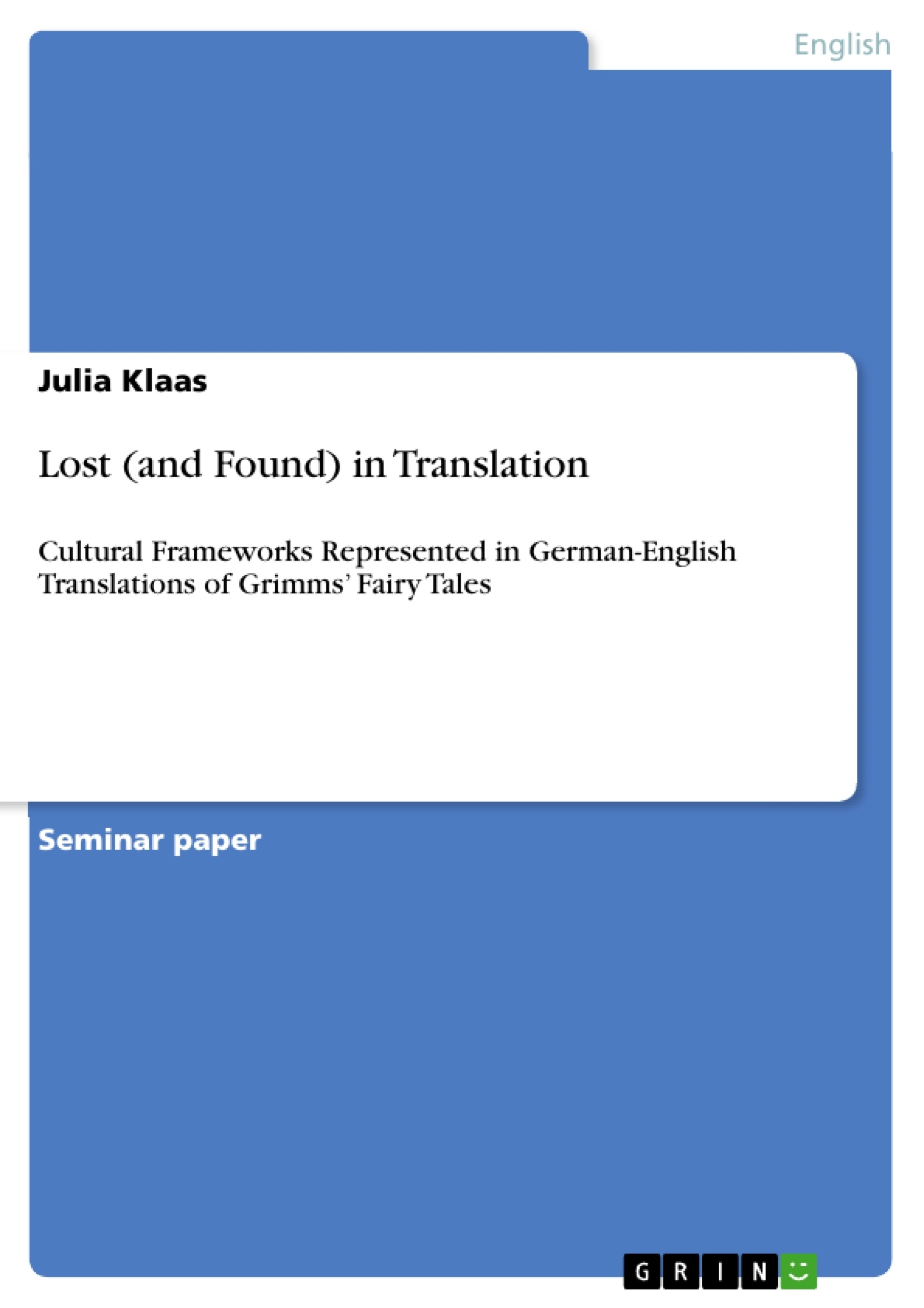Given the popularity of Grimms’ fairy tales and the status of English as a lingua franca, it is only logical that there are a number of translations and adaptations from German into English. This will be the focus of my paper, in which I am dealing with the cultural frameworks that underlie a translator’s decision to translate a well-known story in a certain way over another. In other words, why is it that Rumpelstiltskin does not burst in two halves in most English versions of the fairy tale? Why did Disney see the need to let a fairy godmother help Cinderella and not some kind-hearted doves? And why is it ‘true love’s kiss’ that awakens Snow White instead of the servants’ clumsiness while carrying the coffin?
"Something gets lost in translation, and in translating and editing these “rediscovered” tales I have endeavored to recast them as closely as I could to the originals. At the same time I felled compelled to provide transitions and slight changes to make them comprehensible for an English-speaking audience. Now, though in a foreign tongue, they speak for themselves – to provoke and to entertain."
This is how Jack Zipes introduces his translation of Grimms’ Kinder- und Hausmärchen, a collection of fairy tales compiled and edited by the German brothers Jacob and Wilhelm Grimm between 1812 and 1857. His take on the translation of Grimms’ fairy tales, easily the most famous collections of fairy and folk tales in the Western world, is one of the topics that I will be concerned with in the following paper. It is only “one” of the topics because every translator’s approach is different from all others, and while there are those like Zipes who want to stay as close to the original as possible and provide a ‘literal’ translation of a work, there are others who not only ‘translate’ the language of a story, but also its content, in order to fit more easily with the cultural background of the intended readership.
Table of Contents
I. Publication and Translation History of Grimms’ Kinder- und Hausmarchen
II. German-English Translations of the KHM
The Representation of Cultural Frameworks in the Translation of Fairy Tales
Sneewittchen, Snow-drop and Snow White
III. Conclusion
IV. Works Cited
- Citar trabajo
- Julia Klaas (Autor), 2013, Lost (and Found) in Translation, Múnich, GRIN Verlag, https://www.grin.com/document/492530
-

-

-

-
¡Carge sus propios textos! Gane dinero y un iPhone X. -

-
¡Carge sus propios textos! Gane dinero y un iPhone X. -

-
¡Carge sus propios textos! Gane dinero y un iPhone X. -

-
¡Carge sus propios textos! Gane dinero y un iPhone X. -

-
¡Carge sus propios textos! Gane dinero y un iPhone X. -

-
¡Carge sus propios textos! Gane dinero y un iPhone X. -

-
¡Carge sus propios textos! Gane dinero y un iPhone X.

